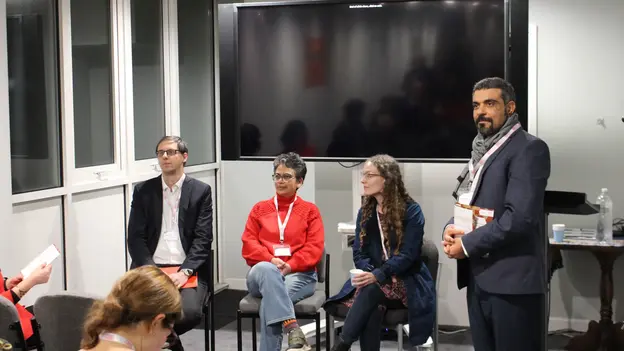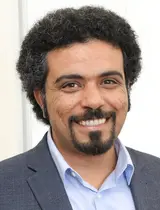Tandem Project
Conceptualising Sacred Languages and Their Visual Inimitability
Conference
Sacred Languages hold religious significance and are primarily used for spiritual purposes. They are believed to be divine or holy and often tied to a specific script or writing system with deep symbolic and spiritual meaning for the religious community.
This international conference at SOAS University of London, United Kingdom, explored the dynamic relationship between sacred languages and their visual elements, highlighting the interplay between language, writing, and spirituality. It focused on the shapes of letters and patterns created by word arrangement, shedding light on how these writing systems evoke awe and reverence.
Interdisciplinary Perspectives on Sacred Languages: Script, Architecture & Art
Organized by AGYA members Dr. Hany Rashwan and Prof. Dr. Florian Zemmin, and Rachel Harrison (SOAS University of London), the conference brought together scholars from various cultural and literary fields to present case studies on sacred languages, their interaction with other languages, the arts, and even music.
Discussions included the evolution of the Arabic script from the earliest manuscripts to various calligraphic types used in Qur’anic scripture, which cannot only be found in manuscripts but also function as ornaments in architecture. This phenomenon can also be seen in the case of Church-Slavonic, which now only survives as a liturgical language and can be seen adorning orthodox churches of the East.
Another insightful lecture connected biblical texts to medieval Western European art. In the theology and liturgy of the Latin Middle Ages, silence and music serve as vital channels of communication with God. The lecture explored the variety of pictorial techniques aimed at making silence tangible on the parchment page and hand signs of figures in church art used to teach choirs sacred melodies for liturgy.
The adaptation of sacred texts into other languages, whether in the form of translation, transcription, or transliteration, was another central point of discussion. Jewish scholars in Muslim Spain and North Africa not only used Hebrew script to write Arabic and vice versa Arabic letters to write Hebrew texts. Similarly, in West African manuscripts, the Arabic of the Qur’an was sometimes transcribed or transliterated into local alphabets to enable West African believers to recite the Arabic text without the knowledge of Arabic.
From ‘Lingua Franca’ to ‘Lingua Sacra’
In the concluding discussions, which tied the different case studies and points of debate, various axes were identified as to how sacred languages can be characterised: From the ‘locative’ to the ‘utopian’, and from ‘lingua franca’ to ‘lingua sacra’. Central general questions were raised to better understand sacred languages: What besides their religious use makes languages sacred? Why do they differ, and are there characteristics they all share? Can they be translated? Why do some languages still exist as a lingua franca while others only exist in liturgy?
The conference proceedings will be published as a book, laying the groundwork for further exploration into these questions.
- Disciplines Involved
- Philology, African Studies, Arabic & Islamic Studies, Art History, Comparative Literature Studies, Egyptology, South Asian Studies
- Cooperation Partner
- SOAS University of London
- Event Date
- 7 - 8 December 2023
- Venue
- Lady David Gallery, SOAS University of London, United Kingdom
- Project Title
- Conceptualising Sacred Languages and Their Visual Inimitability
- Year
- 2023
- Funding Scheme
- Tandem Project
- Countries Involved
- Germany, United Arab Emirates, United Kingdom





